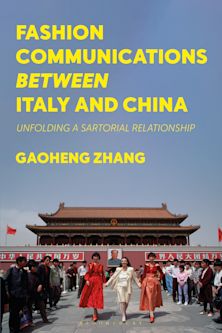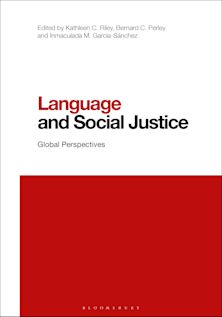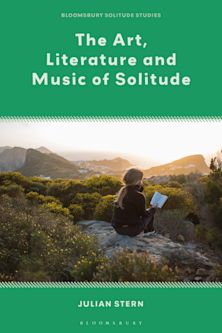- Home
- ACADEMIC
- Anthropology
- Cultural Anthropology
- Public Lands in the Western US
Public Lands in the Western US
Place and Politics in the Clash between Public and Private
Kathleen M. Sullivan (Anthology Editor) , James H. McDonald (Anthology Editor) , Rochelle Bloom (Contributor) , Paul Berne Burow (Contributor) , Douglas Deur (Contributor) , David Knowlton (Contributor) , James H. McDonald (Contributor) , Sayd Randle (Contributor) , Jacqueline J. Russell (Contributor) , Kathleen M. Sullivan (Contributor) , Bruce R. Tebbs (Contributor) , Jonathan P. Thompson (Contributor) , Scott Turner (Contributor)
Public Lands in the Western US
Place and Politics in the Clash between Public and Private
Kathleen M. Sullivan (Anthology Editor) , James H. McDonald (Anthology Editor) , Rochelle Bloom (Contributor) , Paul Berne Burow (Contributor) , Douglas Deur (Contributor) , David Knowlton (Contributor) , James H. McDonald (Contributor) , Sayd Randle (Contributor) , Jacqueline J. Russell (Contributor) , Kathleen M. Sullivan (Contributor) , Bruce R. Tebbs (Contributor) , Jonathan P. Thompson (Contributor) , Scott Turner (Contributor)
You must sign in to add this item to your wishlist. Please sign in or create an account
Description
This edited collection explores the many ways in which diverse individuals and groups—such as state and federal managers, First Peoples, ranchers, miners, oil and gas extraction industries, sports enthusiasts, environmentalists, local residents, and tourists—actively negotiate, contest, and collaborate on issues regarding public lands in the American West. Tracing these ever-morphing alliances and antagonisms, this volume highlights the recurring patterns within this diverse array of social actors.
Table of Contents
Part II: Exploring Senses of Place
Chapter 2: The New Wild West: Range War as Revitalization Movement
Chapter 3: Public Land, Place, and Shadow Displacement in Rural Utah
Bruce R. Tebbs and James H. McDonald
Chapter 4: Claiming the Los Angeles River for "The Public," By Boat and By Permit
Chapter 5: Chile and New Mexico: Identity, Difference, and Place
Part III: Practices and Contexts of Collaboration and Conflict
Chapter 6: A Reckoning of the Nuclear West
Chapter 7: Public Lands Security: The Dispute over Federal versus Local Law Enforcement
Chapter 8: Restoring Wild Bison to the Heart of Cattle Country: Yellowstone's Political Firestorm
Chapter 9: Through a Forest Wilderness:” Native American Environmental Management at Yosemite and Contested Conservation Values in America's National Parks
Chapter 10: Nature's Belonging: Landscapes, Conservation, and the Cultural Politics of Place in the Great Basin
Product details
| Published | Dec 10 2020 |
|---|---|
| Format | Ebook (PDF) |
| Edition | 1st |
| Extent | 220 |
| ISBN | 9781978777545 |
| Imprint | Lexington Books |
| Illustrations | 2 b/w illustrations; |
| Publisher | Bloomsbury Publishing |
About the contributors
Reviews
-
This collection, which grew out of a 2017 conference for the Society for Applied Anthropology, presents a series of essays about how a sense of place contributes to conflict or collaboration regarding access to public lands and their management in the western US. The book is divided into three parts—“Overview,” “Exploring Senses of Place,” and “Practices and Contexts of Collaboration and Conflict”—but these divisions seem unnecessary given several recurrent themes. Each chapter treats issues related to competing cultural, economic, and political (among other) perspectives on management issues relating to public lands or waterways in western states. The one exception is the chapter on constructed identities of New Mexico, which does not address public land issues directly and seems to belong in a different book. Most chapters also acknowledge Native American displacement and its consequences. Overall, the issues presented are complex, as shown in the two chapters that treat conifer succession in Yosemite (about restoring landscapes through limited tribal gathering and stewardship practices) and the Great Basin (about the fundamental issues around restoration). Supplemented with chapter bibliographies, this volume is suitable for academic collections on environmental conservation and cultural resource management. Recommended.
Choice Reviews
-
The American West and its public lands are ripe and rife with mythology (e.g., the frontier, manifest destiny), contestation (e.g., range wars, buffalo wars, nuclear development), and prospects for unique collaborations (e.g., co-management of lands and resources). This probing and provocative collection of essays offers clear insights as to why this is the case. The authors argue that it is not just a matter of geography that defines the West, but also its diverse cultural histories, niche constructions, identity politics, social movements, resource economies, and management regimes, all of which contribute to a multiplicity of senses of place. Moreover, the industrial and settler colonial logics of ranching, mining, timber, water and energy development, environmental conservation, and nationalism, along with those of local and Indigenous sovereignty and self-determination, still inform this palimpsest of place. Through richly detailed case studies, this work expertly weaves the critical threads of power and place that are both “engendered and entangled” in our nation’s public lands, affording a more accurate, nuanced understanding of the many shades of conflict and collaboration that define the West.
Thomas F. Thornton, University of Alaska Southeast
-
Public Lands in the Western US provides compelling examples of how sense of place intersects with Federal regulations and management and white settler privilege and entitlement, in the context of extractive capitalism. One of the things that I appreciate the most about this book is how the ethnographic approach dispels the fallacy of easy culprits and victims of western public and private landscapes. What one comes away with instead is an understanding of the complex set of pressures that stem historically from the unique American experiment of creating and preserving vast tracts of public lands in the western states that began in the late nineteenth century.
David Kozak, Fort Lewis College
-
Fresh, insightful, and accessible, Public Lands in the Western US shows how cherished--but often conflicting—senses of place shape diverse debates about America's public lands. Rich in both details and concepts, Sullivan and McDonald have produced something rare: an edited volume with a sense of clarity. This book deserves a place on the shelf of anyone who both loves and laments the American West.
Peter S. Alagona, University of California, Santa Barbara

ONLINE RESOURCES
Bloomsbury Collections
This book is available on Bloomsbury Collections where your library has access.


































